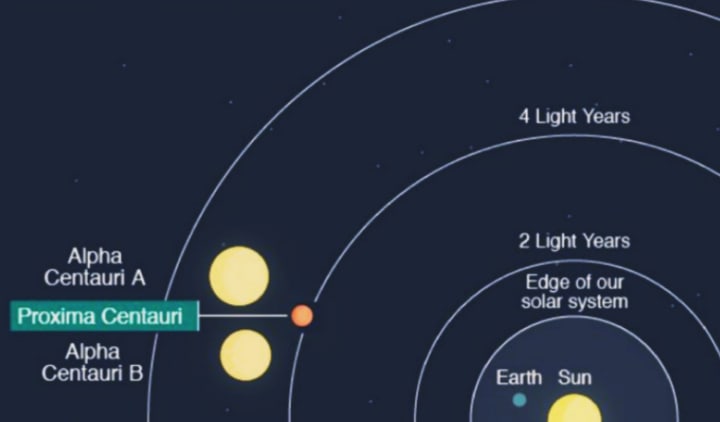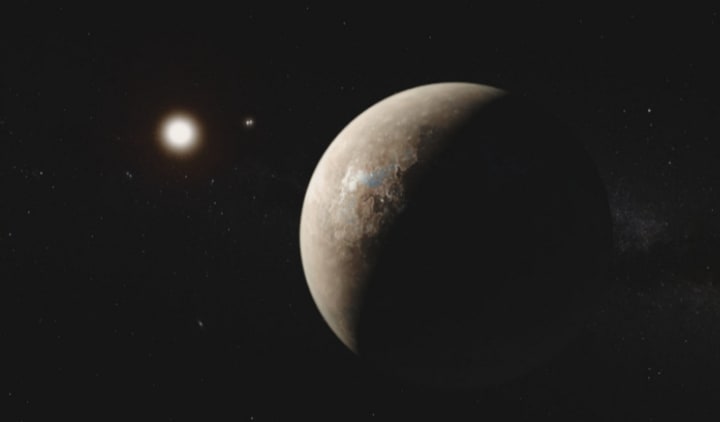
Proxima Centauri

Proxima Centauri is a red dwarf star located in the constellation of Centaurus, and is the closest known star to our solar system. At a distance of just 4.24 light-years, Proxima Centauri is an astronomical neighbor that has captured the imagination of astronomers and the general public alike. Despite its proximity, however, this star is not well known to many, and the discovery of a potentially habitable exoplanet in its orbit has only increased interest in this fascinating celestial object. In this article, we will explore the history, properties, and significance of Proxima Centauri.
Discovery of Proxima Centauri
The discovery of Proxima Centauri dates back to 1915, when Scottish astronomer Robert Innes discovered the star as part of his search for the nearest stars to our solar system. Innes was using the Union Observatory in South Africa to carry out his research, and he noticed that one of the stars he was observing, Alpha Centauri, appeared to be accompanied by a small, faint companion star. Further observations confirmed that this companion was, in fact, a separate star, and Innes named it Proxima Centauri.
physical properties
In terms of its physical properties, Proxima Centauri is classified as a red dwarf star, which are the most abundant type of star in the universe. Red dwarfs are characterized by their small size and low luminosity, and Proxima Centauri is no exception, with a radius that is only about one-seventh that of our Sun and a luminosity that is only 0.17% that of the Sun. Despite its small size, however, Proxima Centauri is a surprisingly active star, and is known to produce frequent and intense flares that can temporarily increase its brightness by several orders of magnitude.
Discovery of an exoplanet
One of the most significant discoveries related to Proxima Centauri occurred in 2016, when a team of astronomers announced the discovery of an exoplanet in its orbit. The exoplanet, named Proxima Centauri b, is located just 4.24 light-years from Earth and is considered to be one of the most promising candidates for the potential habitability of exoplanets. This is because Proxima Centauri b is located within the star's habitable zone, which is the region around a star where conditions are suitable for liquid water to exist on the surface of a planet.
The discovery of Proxima Centauri b has generated significant interest among astronomers and the general public, and has led to increased attention on the star and its planetary system. In the years since its discovery, several studies have been carried out to better understand the properties of Proxima Centauri b and its host star. These studies have revealed that the exoplanet is likely a rocky world with a mass that is similar to that of Earth, and that it orbits Proxima Centauri in an elliptical orbit that takes 11.2 Earth days to complete.

One of the most exciting aspects of Proxima Centauri b is the possibility of exploring the exoplanet and searching for signs of life. Although the star is located 4.24 light-years away, this is still relatively close by astronomical standards, and current technology makes it possible to send probes to the exoplanet in the future. The Breakthrough Starshot project, for example, is a proposed mission that aims to send a fleet of tiny, light-propelled spacecraft to Proxima Centauri and its planetary system to search for signs of life.
conclusion
In conclusion, Proxima Centauri is a fascinating astronomical object that has captured the imagination of astronomers and the general public alike. Located just 4.24 light-years from Earth, this red dwarf star is the closest known star to our solar system.
About the Creator
Enjoyed the story? Support the Creator.
Subscribe for free to receive all their stories in your feed. You could also pledge your support or give them a one-off tip, letting them know you appreciate their work.






Comments
There are no comments for this story
Be the first to respond and start the conversation.